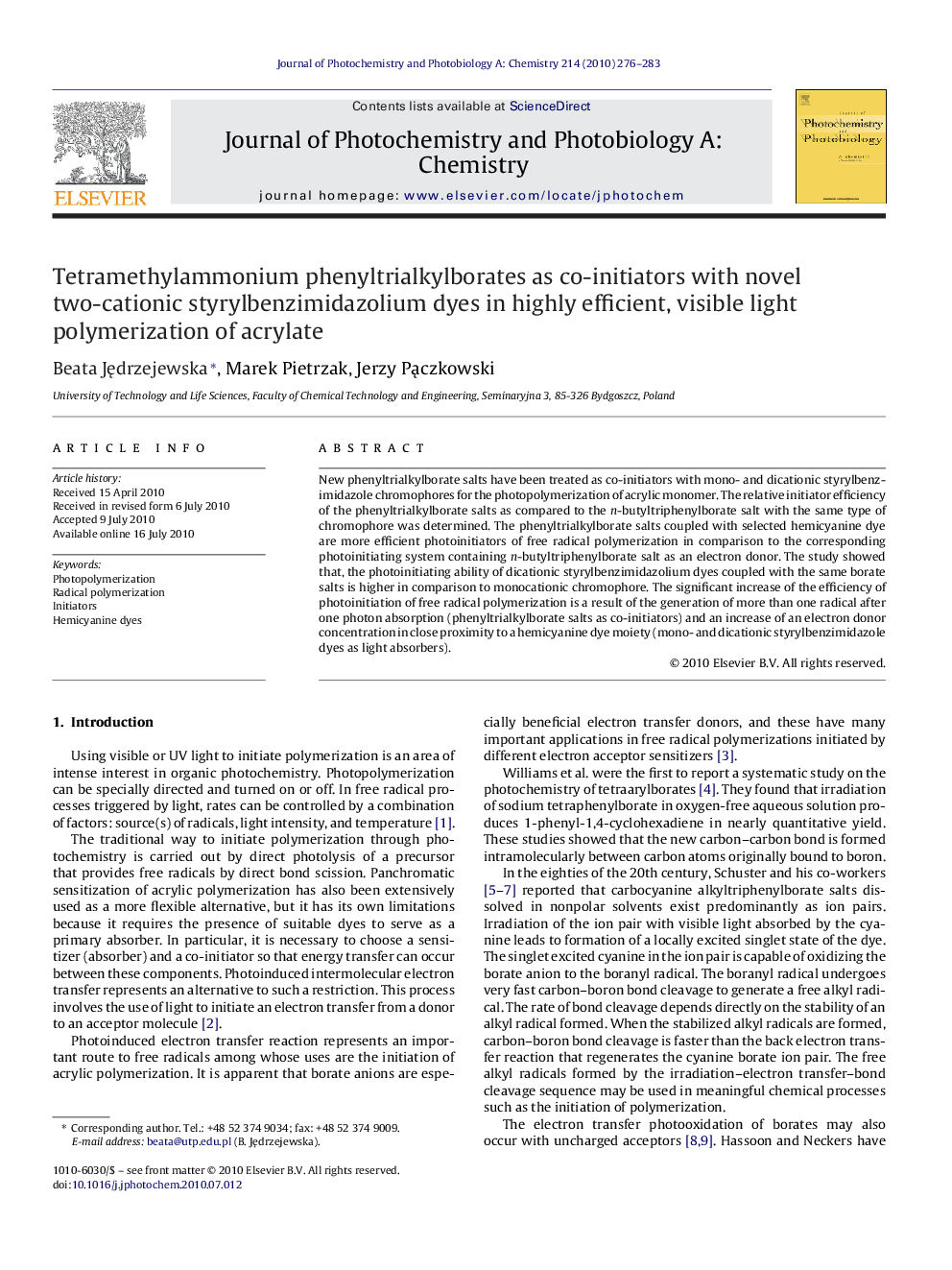| Article ID | Journal | Published Year | Pages | File Type |
|---|---|---|---|---|
| 26918 | Journal of Photochemistry and Photobiology A: Chemistry | 2010 | 8 Pages |
Abstract
New phenyltrialkylborate salts have been treated as co-initiators with mono- and dicationic styrylbenzimidazole chromophores for the photopolymerization of acrylic monomer. The relative initiator efficiency of the phenyltrialkylborate salts as compared to the n-butyltriphenylborate salt with the same type of chromophore was determined. The phenyltrialkylborate salts coupled with selected hemicyanine dye are more efficient photoinitiators of free radical polymerization in comparison to the corresponding photoinitiating system containing n-butyltriphenylborate salt as an electron donor. The study showed that, the photoinitiating ability of dicationic styrylbenzimidazolium dyes coupled with the same borate salts is higher in comparison to monocationic chromophore. The significant increase of the efficiency of photoinitiation of free radical polymerization is a result of the generation of more than one radical after one photon absorption (phenyltrialkylborate salts as co-initiators) and an increase of an electron donor concentration in close proximity to a hemicyanine dye moiety (mono- and dicationic styrylbenzimidazole dyes as light absorbers).
Related Topics
Physical Sciences and Engineering
Chemical Engineering
Bioengineering
Authors
Beata JÄdrzejewska, Marek Pietrzak, Jerzy PÄ
czkowski,
